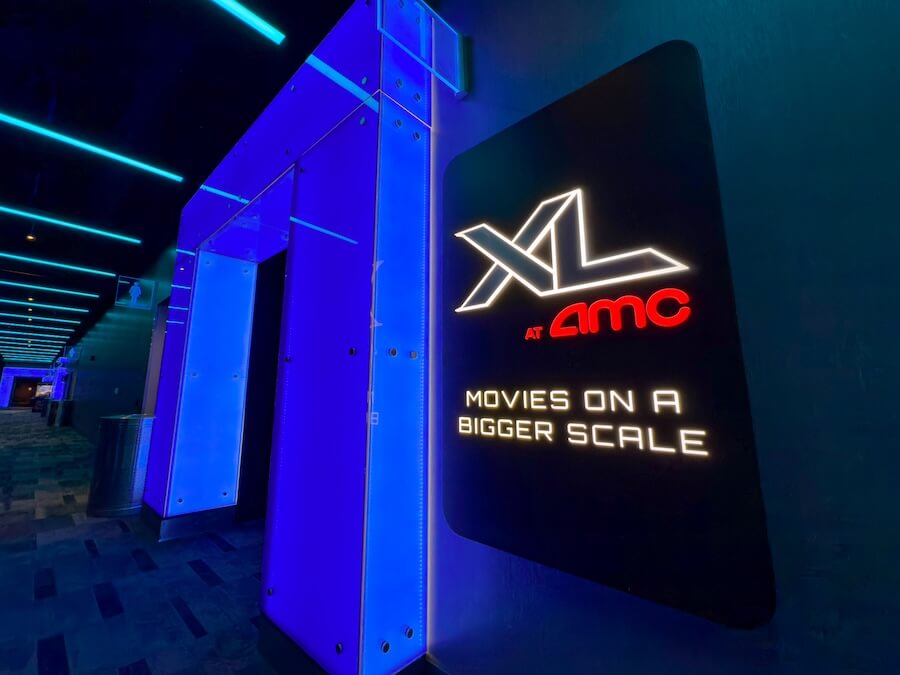We were wrong — the movie theater is not dead. In fact, it’s having its best quarter in more than two years. AMC Entertainment’s Q2 2025 results crushed revenue and EPS forecasts, driven by a surge of blockbuster releases and packed auditoriums. Sitting in a sold-out screening of Weapons last night, I felt a sense of relief. The cinematic experience that felt like it was on life support during the pandemic now appears to be gathering steam. But is this revival built to last, or just a well-edited trailer for another cliffhanger?
AMC pulled in $1.40 billion in Q2 2025 revenue — up 35.6% from a year ago and above the $1.36 billion analysts were expecting. Adjusted EPS came in at $0, blowing past predictions for a $0.07 loss. Adjusted EBITDA jumped to $189.2 million from just $38.5 million in Q2 2024, and free cash flow swung into the black at $88.9 million, compared to a $79.2 million loss last year.
Attendance climbed 25.6% to 62.8 million moviegoers. AMC also set records for how much each guest spent: $12.14 on tickets and $7.95 on food and drinks. Who wants $9 hot dogs? Apparently, a lot of people.
Why AMC’s Box Office Is Booming (And No, It’s Not Just the Dolby Seats Shaking Your Wallet)
The big story behind AMC’s Q2 blowout isn’t just that people went back to the movies — it’s why they showed up and spent like they did. This year’s box office has actually delivered better-quality blockbusters (whether you personally liked them or not, audiences clearly have). F1, Superman, The Fantastic Four: First Steps, Weapons, Mission Impossible, The Bad Guys 2, The Naked Gun, Jurassic World: Rebirth, Sinners, Lilo & Stitch, and A Minecraft Movie have all moved tickets. Premium showings — AMC Laser, Dolby Cinema, and IMAX — have done especially well, with consumers willing to pay extra for the big screen, big sound, and those bass-rumbling Dolby seats.

Food is more expensive, and apparently, that’s not slowing anyone down — per-patron concessions hit a record high. Many regulars (myself included) are on AMC Stubs or A-List plans because we go often enough to make it worth it. And why wouldn’t people be spending more time at the theater? This summer has been brutally hot, with more than a few places drowning in rain. I split my time between two oceanside spots, and in both, it’s been a terrible beach season.
Restaurant visits are down across the board as consumers tighten up. Even McDonald’s had to rethink its menu and pricing to see a bump. Throw in tariffs pushing other costs higher, and the math gets interesting: a night at the movies — even with premium seats and overpriced snacks — is still cheaper than taking the family to a ballgame in a major market, and a theme park is now a $1,000-plus hit for just a day or two. In short, the theater is looking like the best value in big, immersive entertainment right now.
“Moviegoers want their favorite films in the most immersive, spectacular formats possible,” CEO Adam Aron said. “Our premium auditoriums are packing nearly triple the occupancy of standard screens — and they’re doing it at a healthy price premium.”
While not every release has been a winner — there are still more box office duds than blockbusters — the overall slate is smaller. We’re sitting at around 200 films so far this year, compared to roughly 500 in the pre-pandemic days. Even some well-made titles like 28 Years Later, September 5, The Phoenician Scheme, Black Bag, and A Complete Unknown have stumbled domestically despite solid reviews or strong casts.
The top five domestic box office hits of 2025 so far are A Minecraft Movie ($423,949,195), Lilo & Stitch ($421,624,778), Superman ($331,243,139), Jurassic World: Rebirth ($326,800,075), and the shocker of the bunch, Sinners ($278,578,513) — which I’ve personally seen three times. DC scored a massive win with Superman, but the real curveball? A vampire flick set in the Deep South outgrossed every single Marvel movie this year.

The Bottom Line
AMC’s crushing it so far in 2025, riding the wave of strong blockbusters, premium formats, and bigger per-guest spending. Meanwhile, the movie industry is juggling a shifting landscape: streaming consolidation is speeding up with Disney+ and Hulu tightening their grip, Paramount+ merging with Skydance and snagging UFC rights outside pay-per-view, and Netflix building a massive new studio just two miles from my Jersey Shore spot—Ft. Monmouth is about to become ground zero for the largest film studio east of the Mississippi. That place will be booked solid for the next decade.
Looking ahead, 2026 promises two major Star Wars and Marvel films that will set the stage for next summer’s big tentpole battles. But movie fans aren’t exactly buzzing about the Mandalorian/Grogu spinoff—there’s serious Pedro Pascal burnout for some—and there’s growing concern in the Marvel universe about The Avengers: Doomsday, which seems to be trying to cram too many returning characters into one film. We shall see if it pays off or just feels like franchise fatigue.
Will the box office stampede continue through the rest of the year? Don’t count on it. The blockbuster flood is slowing, with more Oscar contenders, a heavier dose of limited releases, and nostalgic anniversary re-releases like Jaws’ 50th Anniversary IMAX showings filling screens. Plus, expect a steady stream of low-budget horror flicks to keep the lights on. The movie business is evolving — and if you want to keep cashing in on the big screen, you better adapt as fast as the streaming wars are consolidating.
For more information: amctheatres.com
